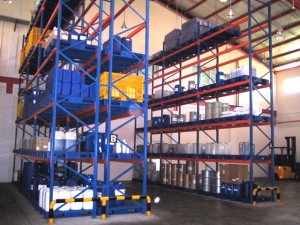Continuing with last week’s topic of spare parts, today’s post will review maintaining your spare parts inventory in a way that will actually save you money.
Although a spare parts inventory is usually necessary, carrying enough parts to build a whole new machine is not. In fact, the excess non-vital parts within the inventory can actually be a liability on the balance sheet. Fortunately, you can reduce your spare parts inventory without compromising your productivity – here are two ways to do just that:
Prioritize Your Parts
This will take some time, but the results will amaze you. Many companies working without proper inventory controls are also carrying a lot of unnecessary parts in that inventory. So the first thing to do is to intimately understand the spare parts that you carry, and also the machines that you run.
Next, assign each part to one of the following categories: vital, necessary and ordinary.
- Vital parts are those required in order to keep the entire plant operating. These parts are also difficult to obtain and may need to be custom fabricated, taking an exceptionally long period of time to acquire.
- Necessary parts are for machines that are important for operations, but not business threatening. These parts may take a few days or weeks to acquire. They may also be parts that need replacing often.
- Ordinary parts are those commonly found in the local supply store or those that can be bypassed until a new one arrives. Their breakdown only has a minor effect on production, if any at all.
You’ll need to keep a stock of the vital and necessary parts, but the ordinary ones can be downsized after the next step.
Determine how often certain machinery and parts require repair or replacement. An ordinary part may be the culprit, but the part needs replacing frequently. In this case, the ordinary spares should remain in inventory. Similarly, several spares of a vital part are unnecessary if the part is rarely replaced.
Now, sit down with your equipment and inventory managers, maintenance and repair crew to determine which parts should stay and which should go.
Sub-Contract the Job
Larger companies often form partnerships with parts suppliers to avoid the large inventory expenses. The supplier places the spare parts needed for the company machinery within the plant itself. Only when a part is needed is the plant charged. Otherwise, the supplier keeps track of the inventory. This setup has the added bonus of a tech support staff that the plant can access when the there are issues with the spares.
Whatever your company needs may be, spare parts should not become a burden. They are designed to rescue the plant. Contact Eagle Technologies for more information about our spare parts services.

